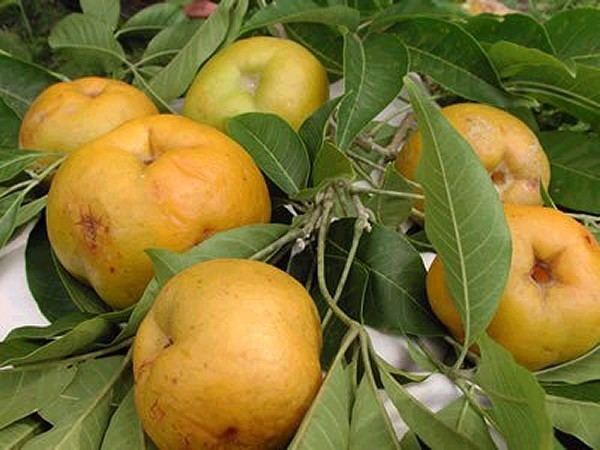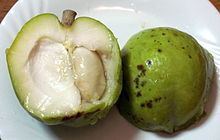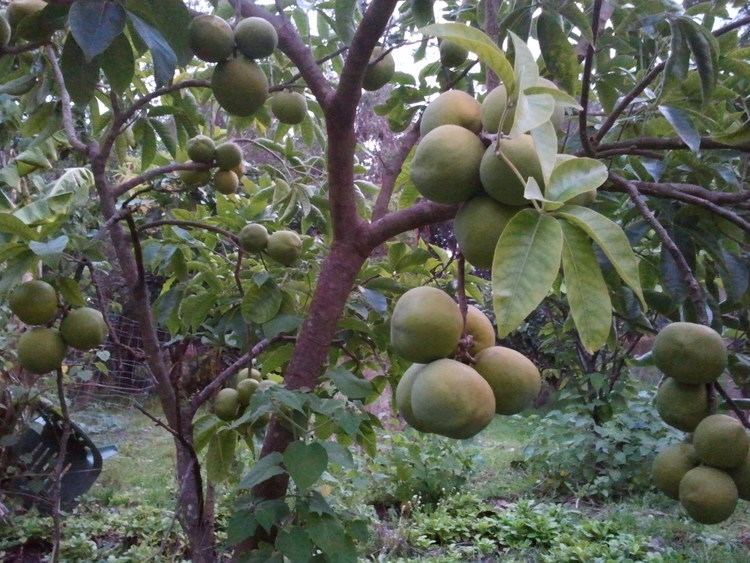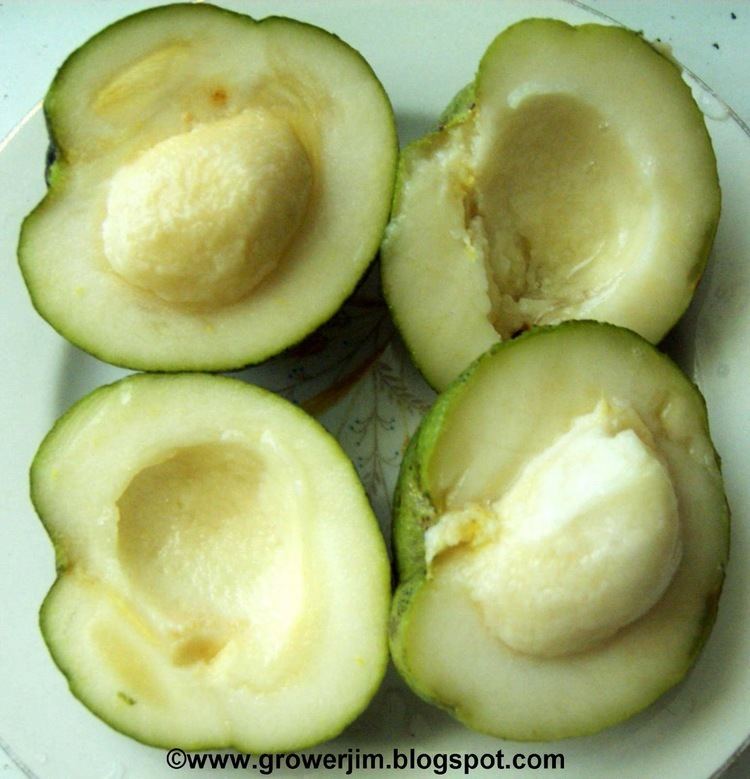Higher classification Casimiroa | Subfamily Toddalioideae Scientific name Casimiroa edulis Rank Species | |
 | ||
Similar Sapote, Black Sapote, Mamey Sapote, Cherimoya, Sapodilla | ||
Tasting the exotic white sapote fruit
Casimiroa edulis, with English common names casimiroa, white sapote, and Mexican apple, and known as cochitzapotl in the Nahuatl language (meaning '"sleep-sapote") is a species of tropical fruiting tree in the family Rutaceae, native to eastern Mexico and Central America south to Costa Rica. The genus is named for "an Otomi Indian, Casimiro Gómez, from the town of Cardonal in Hidalgo, Mexico, who fought and died in Mexico's war of independence."
Contents
- Tasting the exotic white sapote fruit
- White sapote
- Description
- Chemical constituents
- Health effects
- Taxonomy
- References

White sapote
Description

Mature Casimiroa edulis trees range from 5–16 metres (16–52 ft) tall and are evergreen. The leaves are alternate, palmately compound with 3–5 leaflets, the leaflets 6–13 cm long and 2.5–5 cm broad with an entire margin, and the leaf petiole 10–15 cm long.

The fruit is an ovoid drupe, 5–10 cm in diameter, with a thin, inedible skin turning from green to yellow when ripe, and an edible pulp, which can range in flavor from bland to banana-like to peach to pear to vanilla flan.photo 1photo 2photo 3 The pulp can be creamy-white in green skin varieties or a beige-yellow in yellow skin varieties and has a smooth texture similar to ripe avocado. It contains from one to five seeds that are said to have narcotic properties.
Chemical constituents

In the past 40 years, experiments have been carried out on the white sapote's seeds that have yielded the identity of many pharmacologically active compounds, including: N-methylhistamine, N,N-dimethylhistamine and histamine. It also contains 2′,5,6-Trimethoxyflavone, 2′,5,6,7-tetramethoxyflavone (zapotin) and 5-hydroxy-2′,6,7-trimethoxyflavone (zapotinin).
Health effects
Several recent in vitro studies have shown that zapotin has potential anti-carcinogenic effects against isolated colon cancer cells.

Eating the fruit has long been known to produce drowsiness, as noted by Francisco Hernández de Toledo in the 16th century. Europeans were not the first to note this quality; the Nahuatl name of the plant, cochitzapotl (meaning '"sleep-sapote"), is a record of the fact that people knew the plant induced drowsiness.
Taxonomy

Unlike the mamey sapote, white sapote is a member of the family Rutaceae, to which citrus belongs. The black sapote is also unrelated and is actually a species of persimmon. This confusion may be because "sapote" comes from the Nahuatl (Aztec) word tzapotl, used to describe all soft, sweet fruit. Commonly grown in Northern New South Wales, Australia, and often mistaken for a persimmon, although these two fruits are unrelated.
